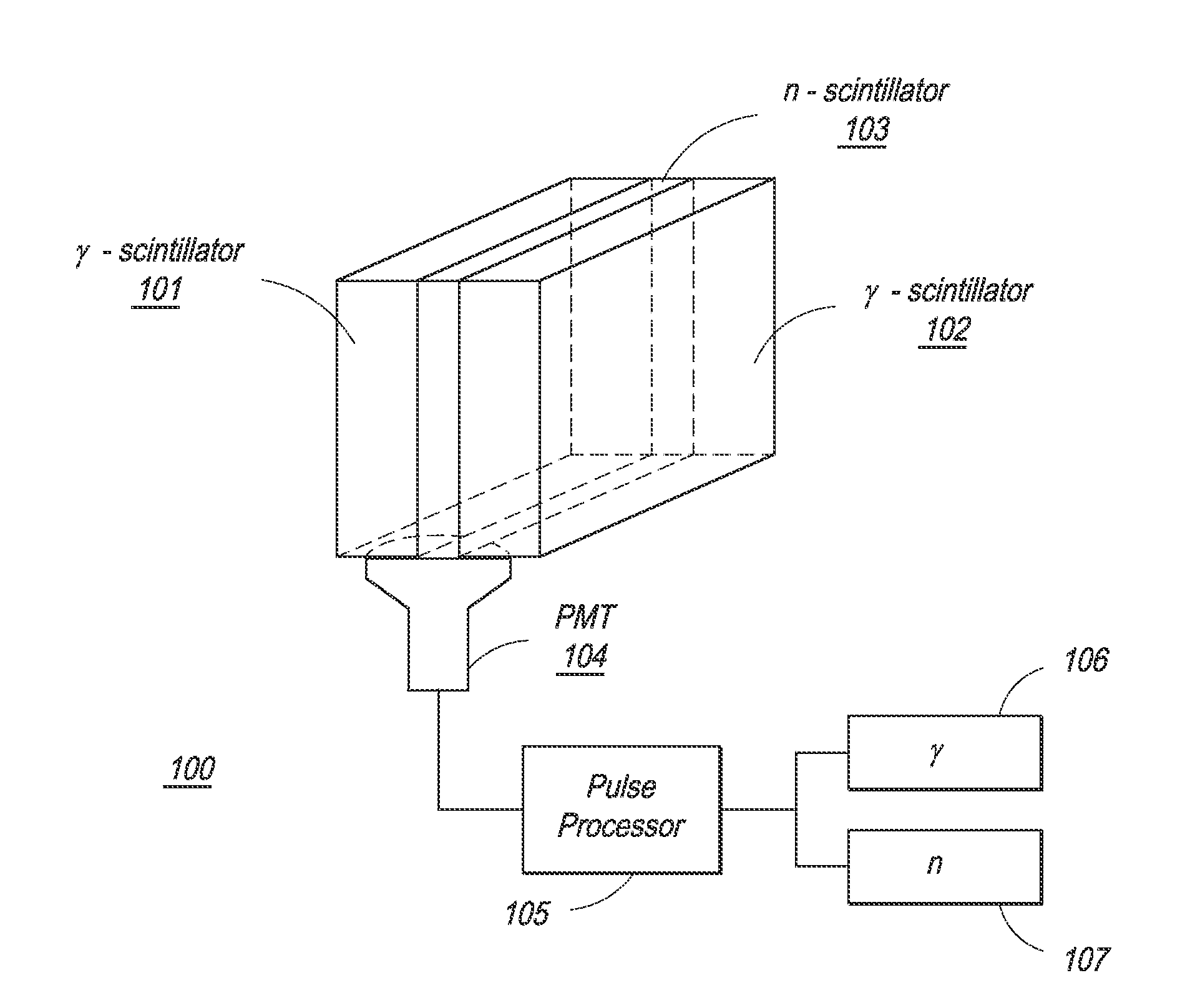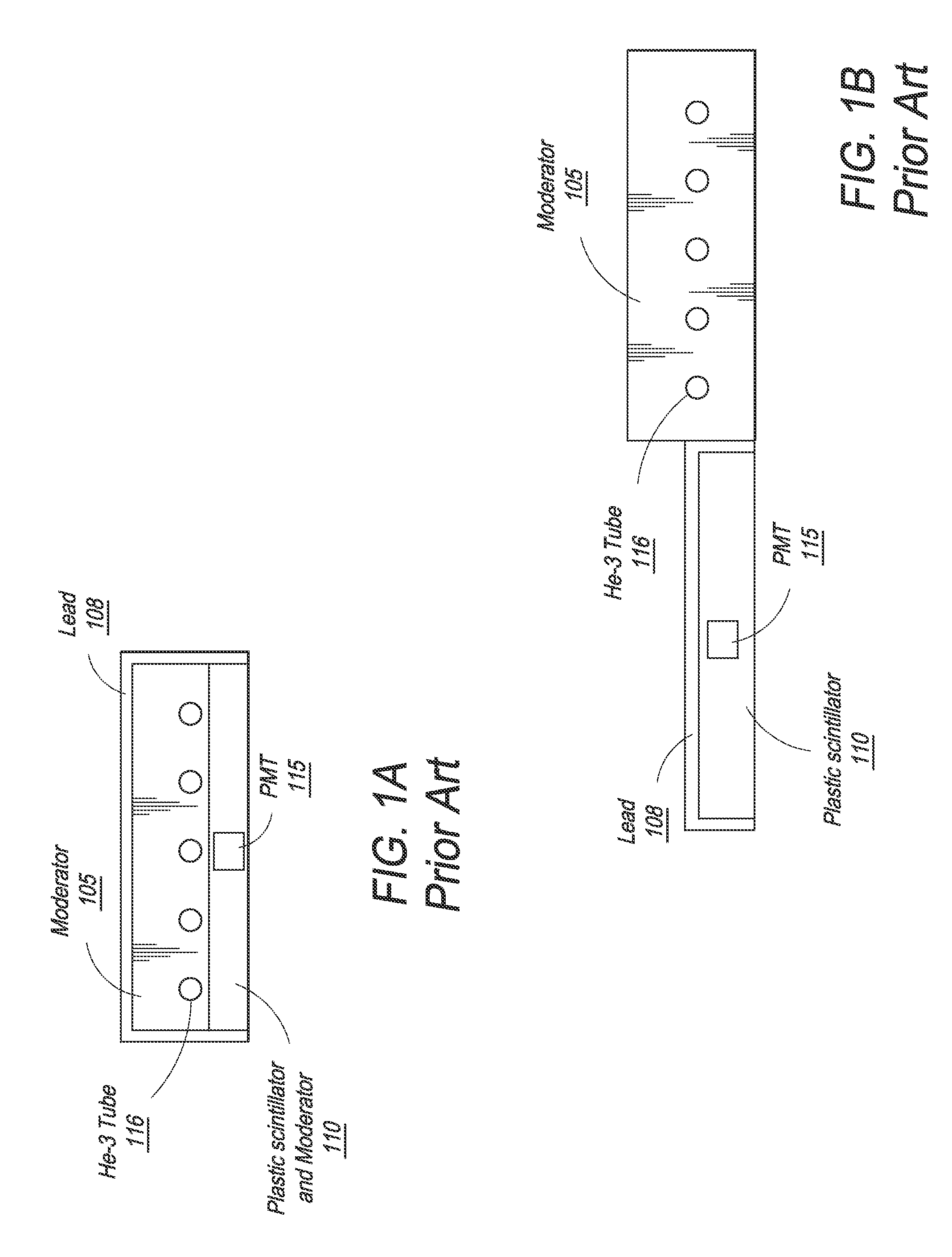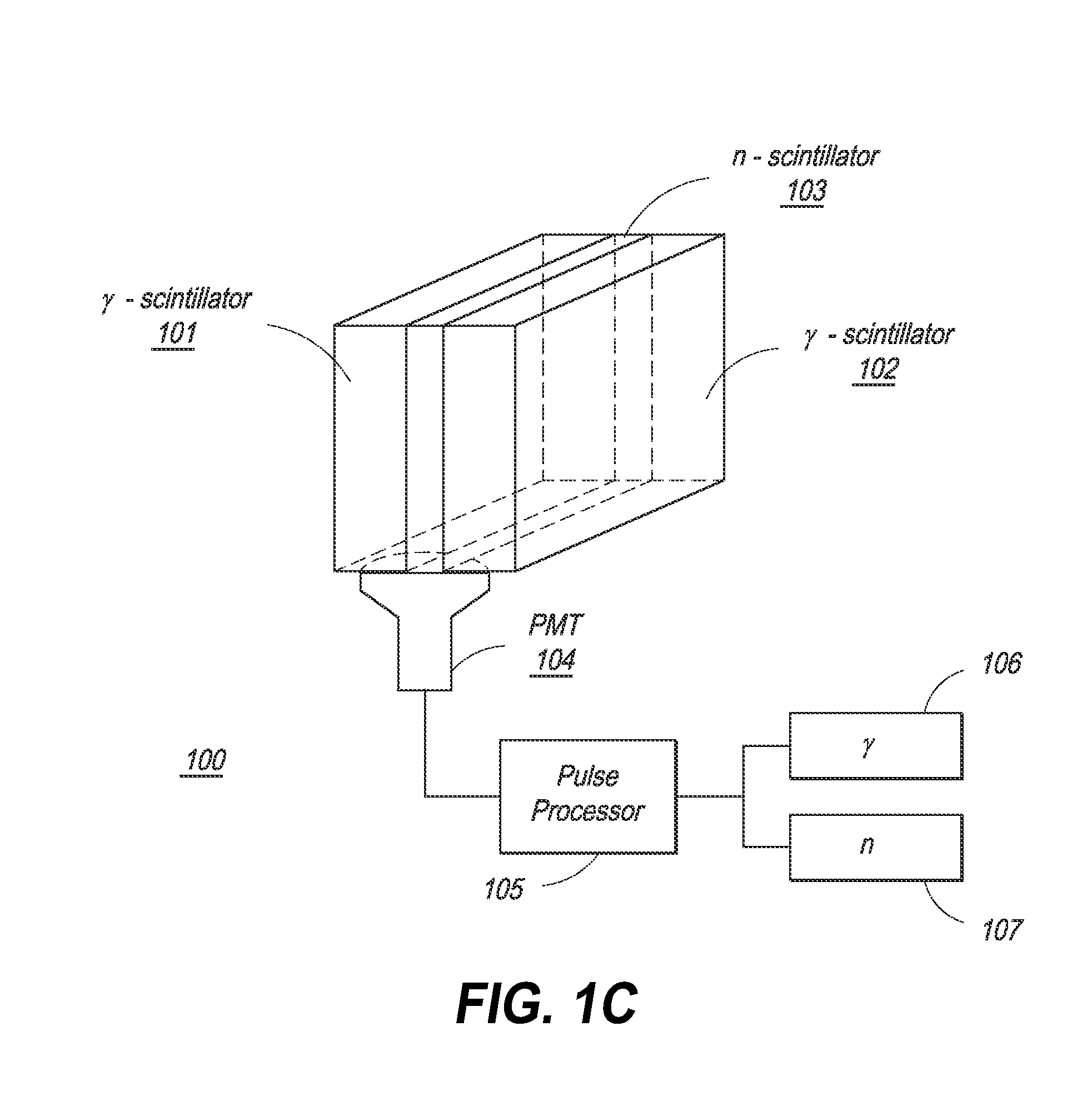Composite gamma-neutron detection system
a detection system and gamma-neutron technology, applied in the field of radioactive materials detection, can solve the problems of difficult detection, high false positive and misdetection rate, poor neutron detection performance of gamma detectors, etc., and achieves simple construction and manufacture, high efficiency, and easy scalable
- Summary
- Abstract
- Description
- Claims
- Application Information
AI Technical Summary
Benefits of technology
Problems solved by technology
Method used
Image
Examples
Embodiment Construction
[0062]The present specification discloses systems and methods for detecting radiological threats using a composite gamma-neutron detector which can be configured to have a high sensitivity for both gamma and neutron detection, with a sufficient separation of the gamma and neutron signatures. The system of the present invention allows for maximum threat detection with minimum false alarms, and thus increased throughput.
[0063]Further, the present specification is directed towards a composite gamma-neutron detection system and method that is cost-effective, compact, and wherein the neutron detector is fabricated from readily available materials.
[0064]The present specification is directed towards multiple embodiments. The following disclosure is provided in order to enable a person having ordinary skill in the art to practice the invention. Language used in this specification should not be interpreted as a general disavowal of any one specific embodiment or used to limit the claims beyo...
PUM
 Login to View More
Login to View More Abstract
Description
Claims
Application Information
 Login to View More
Login to View More - R&D
- Intellectual Property
- Life Sciences
- Materials
- Tech Scout
- Unparalleled Data Quality
- Higher Quality Content
- 60% Fewer Hallucinations
Browse by: Latest US Patents, China's latest patents, Technical Efficacy Thesaurus, Application Domain, Technology Topic, Popular Technical Reports.
© 2025 PatSnap. All rights reserved.Legal|Privacy policy|Modern Slavery Act Transparency Statement|Sitemap|About US| Contact US: help@patsnap.com



